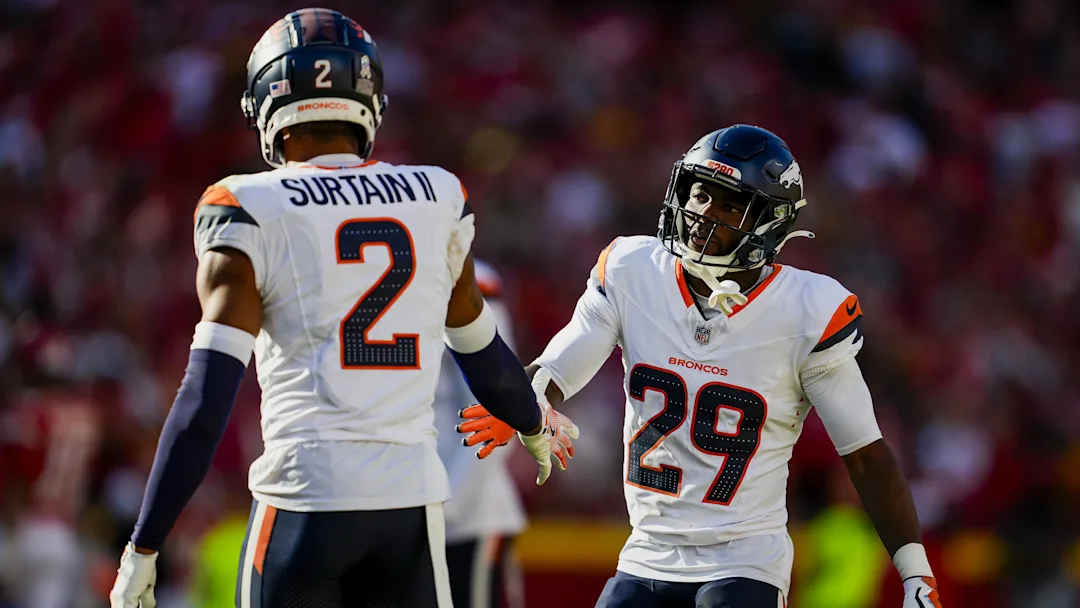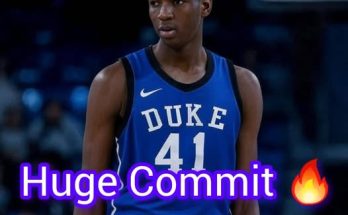The Denver Broncos have long been a franchise built on defense. From the Orange Crush days of the late 1970s to the No Fly Zone secondary that helped secure a Super Bowl 50 title, defense—particularly at the cornerback position—has remained a cornerstone of the team’s identity. In 2025, that legacy is continuing in a major financial way. The Broncos are investing heavily in their cornerback room, a commitment that not only reflects their organizational philosophy but also signals their expectations for the upcoming season and beyond.
As the league shifts to more pass-heavy offenses and versatile aerial attacks, the premium on elite cornerback play has skyrocketed. The Broncos have responded accordingly. By the time the 2025 season kicks off, Denver is projected to rank among the top five teams in total salary cap allocation to cornerbacks, committing over \$48 million to the position group. For context, that’s more than the entire defensive budgets of some rebuilding teams and nearly one-fourth of Denver’s total defensive spending.
Leading the financial charge is All-Pro cornerback Pat Surtain II, whose new extension has reshaped the cornerback market. Surtain, still just 25 years old, inked a five-year, \$115 million deal with \$70 million guaranteed, making him the highest-paid cornerback in NFL history. While the numbers are staggering, few around the league question the value. Surtain has been a lockdown presence since entering the league in 2021, routinely shadowing opposing WR1s and rarely allowing big plays. His technique, discipline, and football IQ make him one of the most feared corners in the game. For Denver, he’s not just a shutdown corner—he’s the cornerstone of the defense.
But Surtain isn’t the only significant investment. Veteran K’Waun Williams is slated to earn \$6 million in the final year of his deal, providing the team with an experienced slot corner who brings grit and leadership to the secondary. Injuries limited Williams’ impact in recent seasons, but when healthy, he remains one of the savviest inside defenders in the league, particularly effective against quick-slot receivers and in run support. His presence ensures that the Broncos can match up effectively against multi-receiver sets, something that’s become a weekly challenge in today’s NFL.
The Broncos also spent wisely and strategically in free agency by signing former Steelers standout Cameron Sutton to a three-year, \$30 million contract. Though his arrival was somewhat overshadowed by Surtain’s extension, Sutton’s signing is crucial for depth and versatility. Sutton has experience playing both inside and outside, allowing defensive coordinator Vance Joseph to get creative with coverages and matchups. He’s known for his anticipation, route recognition, and willingness to mix it up in the run game. In Denver’s scheme, Sutton is expected to complement Surtain by handling No. 2 receivers and providing veteran steadiness to a young room.
Another notable name on the payroll is Damarri Mathis, the third-year cornerback who remains on a team-friendly rookie deal but has shown flashes of being a long-term contributor. While he struggled with penalties and consistency early in his career, Mathis’ raw athleticism and competitive edge have kept him in the rotation. If he can refine his technique and improve his recognition, the Broncos could have a solid, low-cost asset to round out their top four corners.
The financial outlay doesn’t stop with players currently on the roster. Denver also used a second-round pick in the 2024 NFL Draft on Florida State’s Renardo Green, who will count for roughly \$2.5 million against the cap in 2025. Green’s physical style and collegiate production suggest that he could develop into a starting-caliber corner sooner than later. Though he’s not yet an established name, the Broncos are hoping that investment pays long-term dividends, particularly as they navigate future cap flexibility and roster construction.
So why are the Broncos allocating so much of their salary cap to the cornerback position? The answer lies in both philosophy and necessity. In the AFC West, Denver faces some of the most explosive passing attacks in the NFL. Twice a year, they must defend against Patrick Mahomes and the Kansas City Chiefs’ creative offense, now turbocharged by new weapons. The Los Angeles Chargers, under a young quarterback and new offensive-minded head coach, continue to emphasize vertical passing concepts. Even the Las Vegas Raiders, regardless of their rotating QB carousel, often test defenses deep downfield. In such an environment, having elite cornerback play isn’t just a luxury—it’s a survival requirement.
But this financial strategy does come with risks. By concentrating such a large chunk of the cap on one position group, the Broncos inherently leave other areas with less flexibility. Pass rush, linebacker depth, and even offensive line upgrades may be harder to address in future free agency cycles. Injuries to any of these high-priced corners could be devastating—not just from a personnel standpoint, but also from a cap management perspective. If, for example, Surtain were to miss significant time, Denver would still be dedicating a huge portion of their defensive spending to a sidelined star.
Then there’s the long-term impact. Surtain’s deal sets the bar not just for the Broncos but for the entire league. As new cornerback contracts are negotiated across the NFL, Denver will likely be viewed as a benchmark for top-tier pay. That could create a ripple effect, making it more expensive to retain emerging talents like Mathis or Green once their rookie deals expire. It also places pressure on the coaching staff to extract maximum performance from every dollar spent. In a league where parity is razor-thin and every cap dollar matters, misallocation or underperformance can quickly derail playoff hopes.
Still, for all the inherent risk, Denver’s plan is rooted in a clear defensive identity. They want to win by limiting explosive plays, forcing teams to earn every yard, and relying on their corners to hold up in man-to-man situations. It’s a strategy that has worked before—and one they hope will bring them back to playoff relevance in a division loaded with talent.
Team leadership, including head coach Sean Payton and general manager George Paton, have expressed confidence in the approach. Payton, who helped build consistent contenders in New Orleans, understands the value of shutdown cornerbacks in shaping a game plan. With an improved pass rush and a retooled linebacker corps to support the secondary, the Broncos believe they’re constructing a defense that can not only compete but dominate.
In many ways, Denver’s 2025 cornerback commitments symbolize more than just dollar figures—they represent a philosophical bet. A bet that in a league obsessed with quarterbacks and passing fireworks, the path to contention still lies in coverage, discipline, and shutting down the opponent’s best weapon. Whether that bet pays off will depend on health, performance, and how the rest of the roster holds up under the weight of those commitments.
But one thing is clear: in Denver, defense still matters. And in 2025, the Broncos are putting their money where their mouth is—on the backs of some of the most talented cornerbacks in football.



